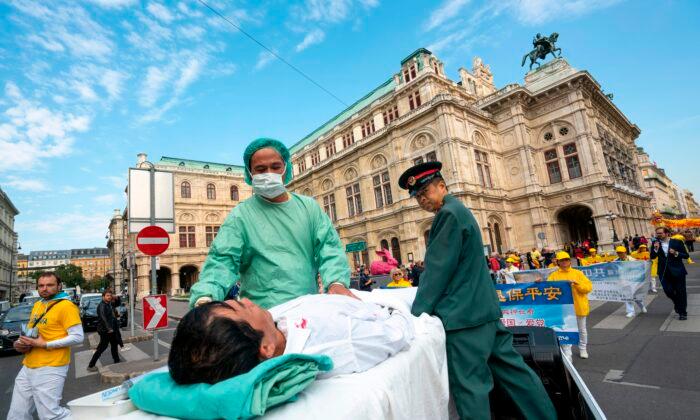Several provinces and cities in China have released official guideline prices for human vital organs, such as livers, kidneys, and hearts, following a notice issued by central authorities on fees and financial management measures for securing organs for transplant.
According to medical experts familiar with China’s organ transplant market, the actions indicate that the Chinese Communist Party (CCP) is attempting to normalize the country’s less-than-transparent organ transplant system as it continues to face pressure to disclose its sourcing of transplant organs.
In a July notice, the CCP ordered provinces, municipalities, and autonomous regions to set their own rates for human organs, effective Sept. 1.
In Henan Province, for example, six related departments, including the Health Commission, the Department of Finance, and the Market Supervision Administration, jointly issued “standard rates for donated organs.”
Price Tags for Human Organs
Dr. Wayne Shih-wei Huang, a surgeon and director at the IRCAD Taiwan, Asia’s largest training center for minimally invasive surgery, said the CCP is hoping to whitewash its transplant abuses by putting a price tag on human organs.In the organ prices listed by province officials, a heart is much cheaper than a kidney, which makes no sense in terms of the medical cost, Huang told The Epoch Times. The cost of obtaining a heart should be higher than that of a kidney, since the heart must be extracted, appropriately stored, and transported within hours, he said.
Huang believes that the pricing of organs is instead a reflection of market value and demand.
In addition, both Hubei and Henan provinces listed different prices for organs for children and adults. The price in Henan Province is 100,000 yuan ($15,600) for a child’s liver, less than half of the 260,000 yuan ($41,000) for an adult. The prices for single and double kidneys for children are also lower than those for adults by 60,000 yuan ($9,400) and 80,000 yuan ($12,500), respectively.
Questionable Donation Figures
The CCP’s organ transplant system lacks transparency, Huang said.“The CCP cannot make its organ transplant system as transparent as that of Western countries,” but it must have a system on the surface for others to see, he said.
The Red Cross Society of China, which is under the control of Beijing, is one of the organizations that documents organ donations and releases data to the national database. It’s not associated with the International Committee of the Red Cross. It said that in China, “organ donation is voluntary and free,” according to its website.
But the Red Cross Society of China will certify whatever the CCP authorities demand of it, Sabi said.
As for the CCP’s official organ donor database, China’s claims of being able to obtain 2.8 organs per donor—which is 180 times higher than what is achievable by donation systems in Europe and the United States—would still fall far short of providing for the 10,000 transplants officially recorded per year, Sabi said.
Falun Gong
A June 2016 report by David Kilgour, former Canadian secretary of state for the Asia-Pacific; David Matas, a human rights lawyer; and Ethan Guttmann, a senior American investigative journalist, estimated that China could be performing between 60,000 to 100,000 transplants per year. Many indicators point to the main source of these organs being Falun Gong practitioners and other prisoners of conscience.Falun Gong is a spiritual meditation practice with three core tenets, truthfulness, compassion, and tolerance. It was estimated to have 70 million to 100 million adherents by 1999, when Beijing deemed it a threat and ordered a persecution campaign against it.
The WOIPFG has searched for and analyzed hundreds of thousands of public media reports, papers, and databases from across 891 transplant hospitals and 9,515 transplant surgeons in China over the past 15 years, and found that, between 2000 and 2006, the number of organ transplants being conducted in China experienced exponential growth.






